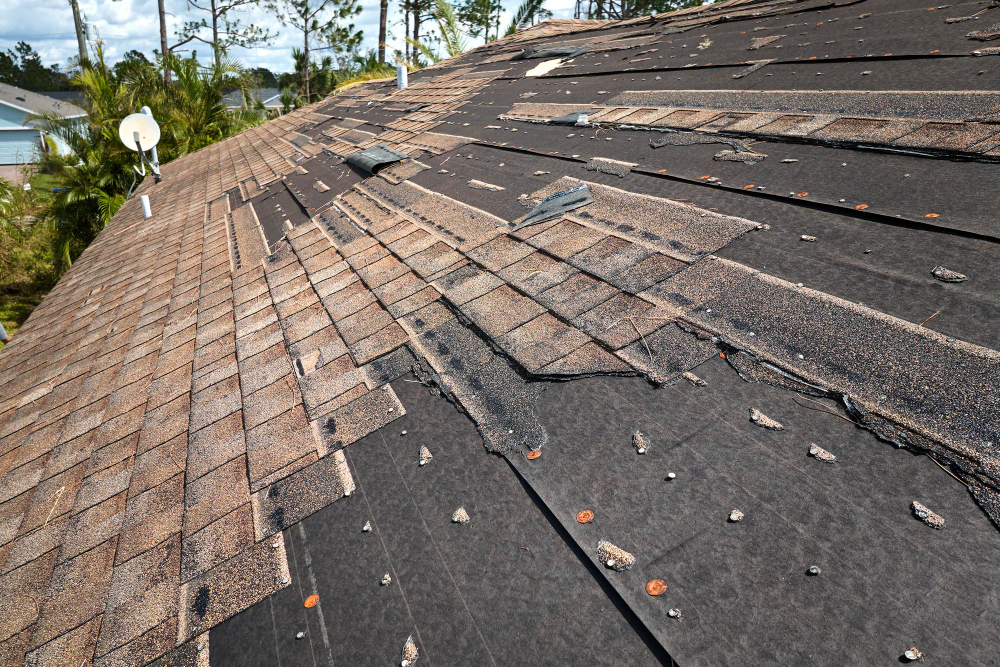The Ultimate Guide to Protecting Your Roof and Home from Damage

Your home's roof is the unsung hero of household structural integrity. It shields you from the elements, keeps you dry and warm, and generally keeps the chaos of weather at bay. But just as any superhero has its kryptonite, so too does the mighty roof have its elements that can lead to its vulnerability. Whether it's a harsh storm or the gradual wear and tear of time, our roofs endure a lot. Here, we'll be unveiling the secrets to nurturing and fortifying your rooftop, ensuring that your castle remains impenetrable.
Unmasking Common Roof Culprits
Understanding the villains that threaten your roof is key to a successful defense strategy. Roof damage can occur suddenly during severe weather, or it might develop slowly, with the signs of deterioration becoming apparent over time. Some of the key culprits include:
Weather Events
- High Winds: Gusts can lift shingles, exposing your roof to the elements and possibly leading to more shingle loss.
- Heavy Rain: Prolonged, intense rain can lead to water seepage that weakens the structure and leaks into the home.
- Hail Damage: Even small hail can cause granule loss, leaving shingles vulnerable to the sun's UV rays, which can rapidly deteriorate them.
Neglect and Age
- Lack of Maintenance: Regular inspections and timely repairs are essential to preventing minor issues from turning into major problems.
- Old Age: Roofs have a finite lifespan and, as they approach the end of it, become more susceptible to damage.
Debris and Pests
- Tree Limbs and Leaves: Overhanging branches can scrape and damage the roof, while leaves and debris can clog gutters and drains, leading to water buildup and damage.
- Animals: Rodents and birds can make nests in your attic, leading to structural damage and health hazards.
The Armor of Inspection and Maintenance
Regular maintenance is your first line of defense when it comes to protecting your roof. A proactive approach can often prevent damage from occurring or escalating, saving you significant repair costs down the line. Here are several steps to consider:
Scheduling Inspections
- Bi-Annual Inspections: Have a professional roof inspector check your roof twice a year, ideally in the spring and fall, to catch any issues before they worsen.
- Self-Inspection: Regularly check your attic for any signs of water damage, such as stains on the ceiling or walls, and climb up into your attic after a heavy storm to look for leaks.
Immediate Repairs
- Timely Shingle Replacement: If you notice missing or damaged shingles, don't wait to have them replaced. Even a small patch can make a big difference.
- Gutter Maintenance: Clean gutters and downspouts regularly to prevent water from backing up and causing damage.
Building a Fortified Roof
When it's time to replace your roof or if you're in the process of building a new home, there are several strategies to consider for making it as resilient as possible.
High-Quality Materials
- Durable Shingles: Invest in shingles with high wind ratings and impact resistance, such as asphalt or metal.
- Proper Ventilation: Good attic ventilation allows your roof to "breathe" and helps regulate temperature and moisture, extending its lifespan.
Professional Installation
- Certified Contractors: Always hire certified and reputable roofing contractors to ensure a proper installation.
- Layering and Underlayment: Consider using multiple layers of underlayment for added protection against leaks.
Reaction and Recovery from Roof Damage
Despite our best efforts, damage may occur. In these situations, it's important to react quickly and effectively to minimize the impact on your home.
Initial Response
- Safety First: If the damage is extensive, stay out of the affected area and wait for a professional assessment.
- Temporary Repairs: If safe to do so, perform temporary repairs to prevent further damage, such as covering a hole with a tarp or draining pooled water.
Loss Adjustment
- Insurance Claims: Contact a loss adjuster to assess the damage and help you with the insurance claims process.
- Document Everything: Take photos and videos of the damage before any repairs are made. Keep a detailed record of all communications and receipts related to the incident.
Empowerment through Knowledge
Arming yourself with knowledge is key to dealing with roof damage. Understanding what to do before, during, and after an event can make a significant difference.
Resources and Expertise
- Local Regulations: Be familiar with local building codes and regulations regarding roofing.
- Industry Expertise: Stay informed about the latest roofing techniques and materials, and don't hesitate to consult with experts.
The Local Touch
When seeking professional assistance, it's often best to turn to local experts who understand the specific challenges your area's climate presents.
The Benefit of Local Knowledge
- Familiarity with Local Conditions: Local roofers are experienced in dealing with the specific weather conditions that your area faces.
- Rapid Response: Local professionals can often respond more quickly in the event of an emergency, minimizing further damage.
Conclusion
Your roof is an investment worth protecting. With the information provided in this guide, you can create a comprehensive strategy to safeguard your home against the many threats that roofs face. Remember, being prepared and taking preventative measures can mean the difference between a minor repair and a major restoration. In the end, a little maintenance can go a long way in preserving the sanctity of your beloved home. If you're looking for a loss adjuster in Orlando, FL, contact Ultra Property Damage today for a free consultation.
 (888) 979-7969
(888) 979-7969
 (888) 979-7969
(888) 979-7969
